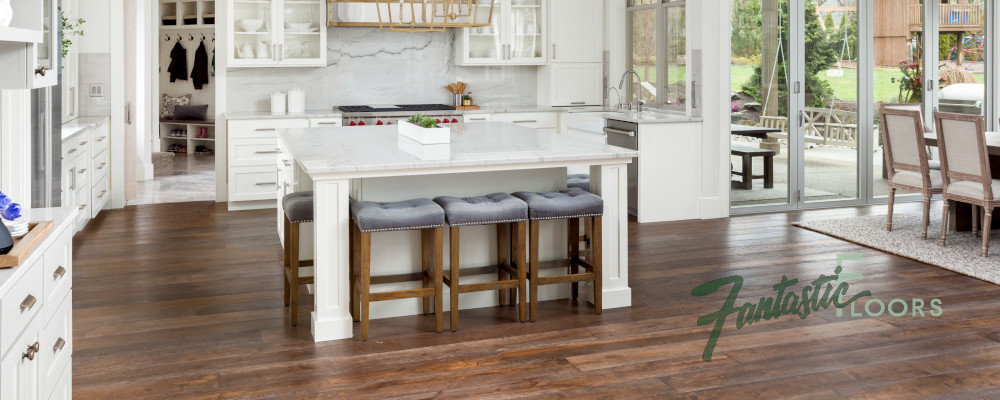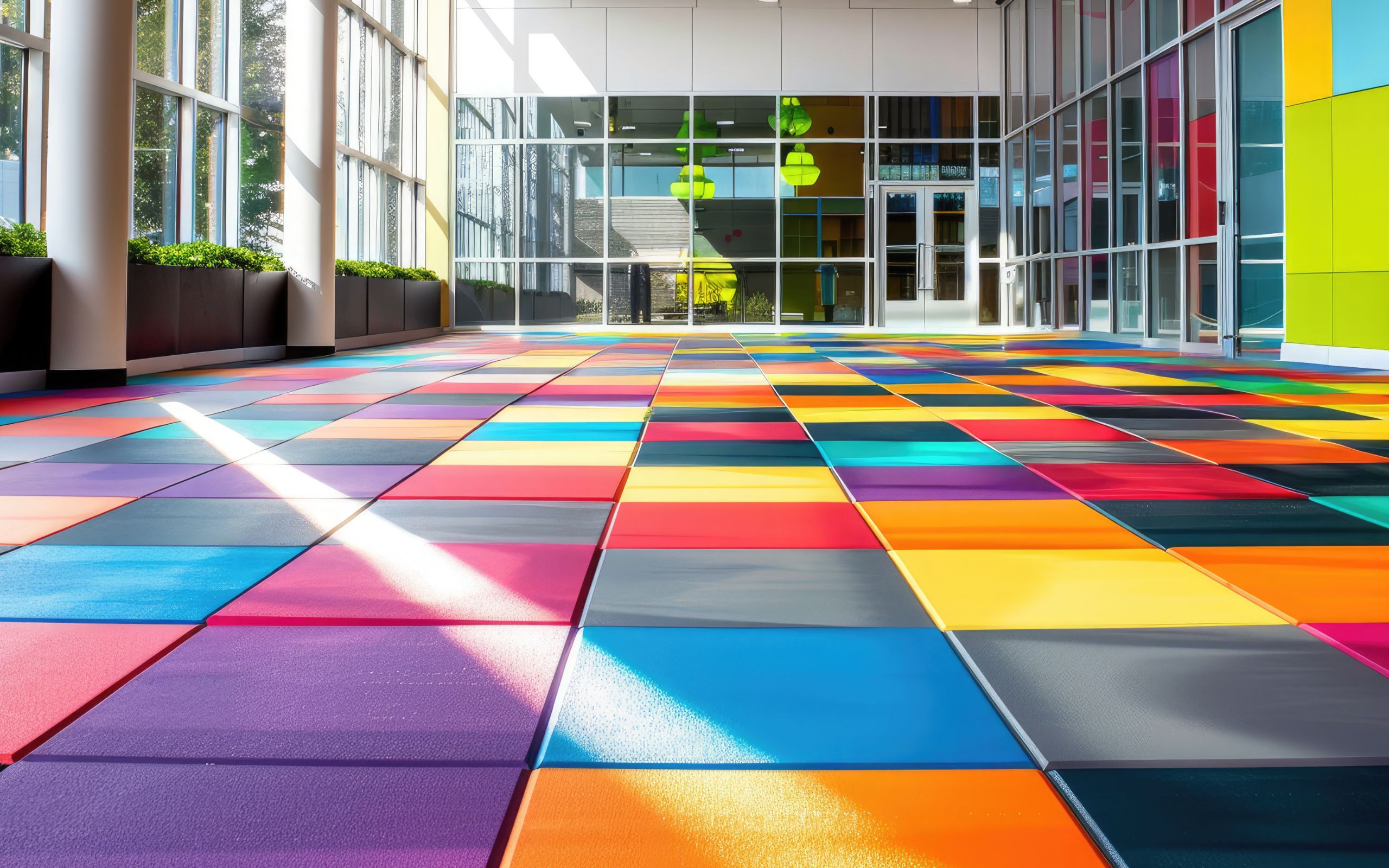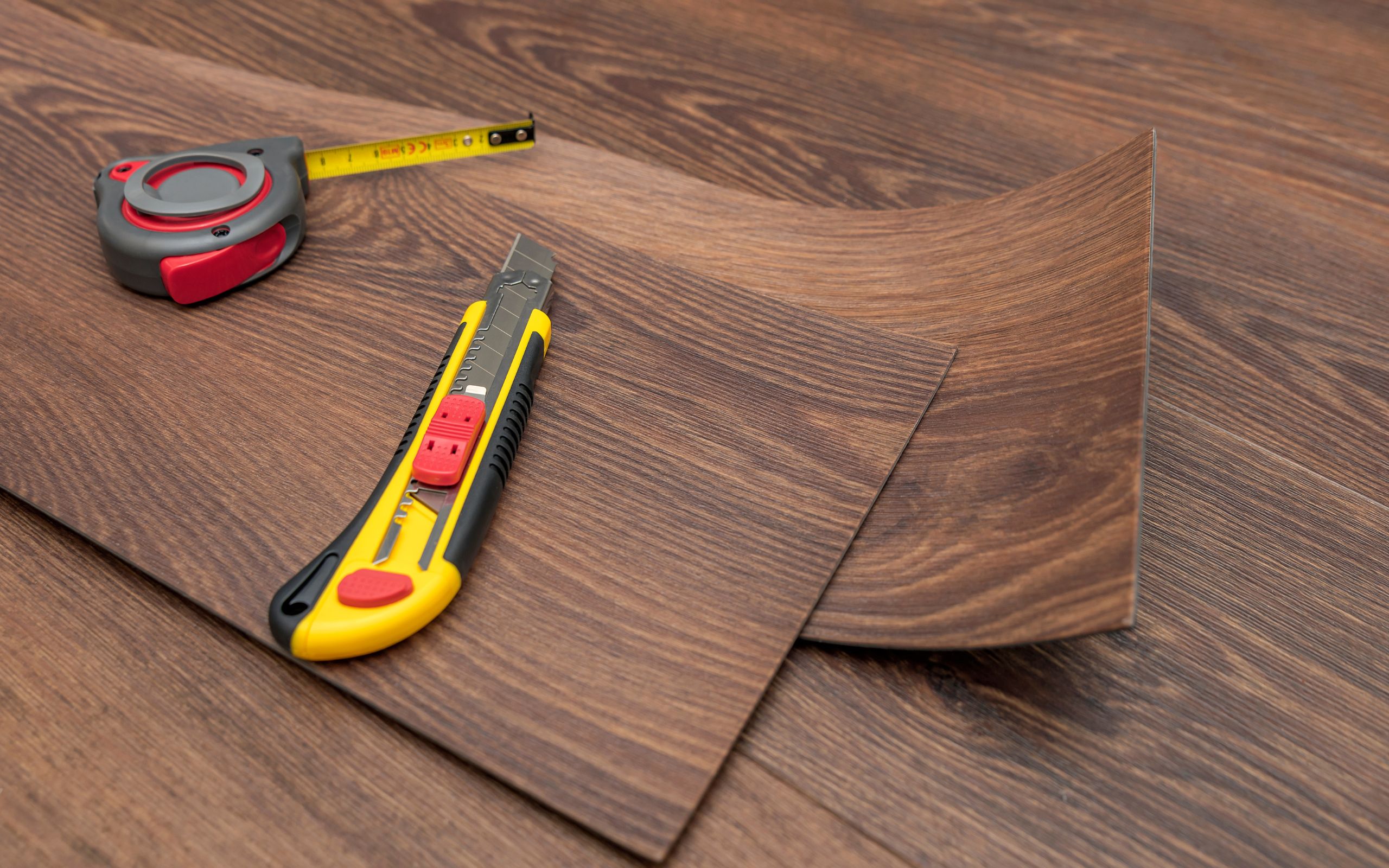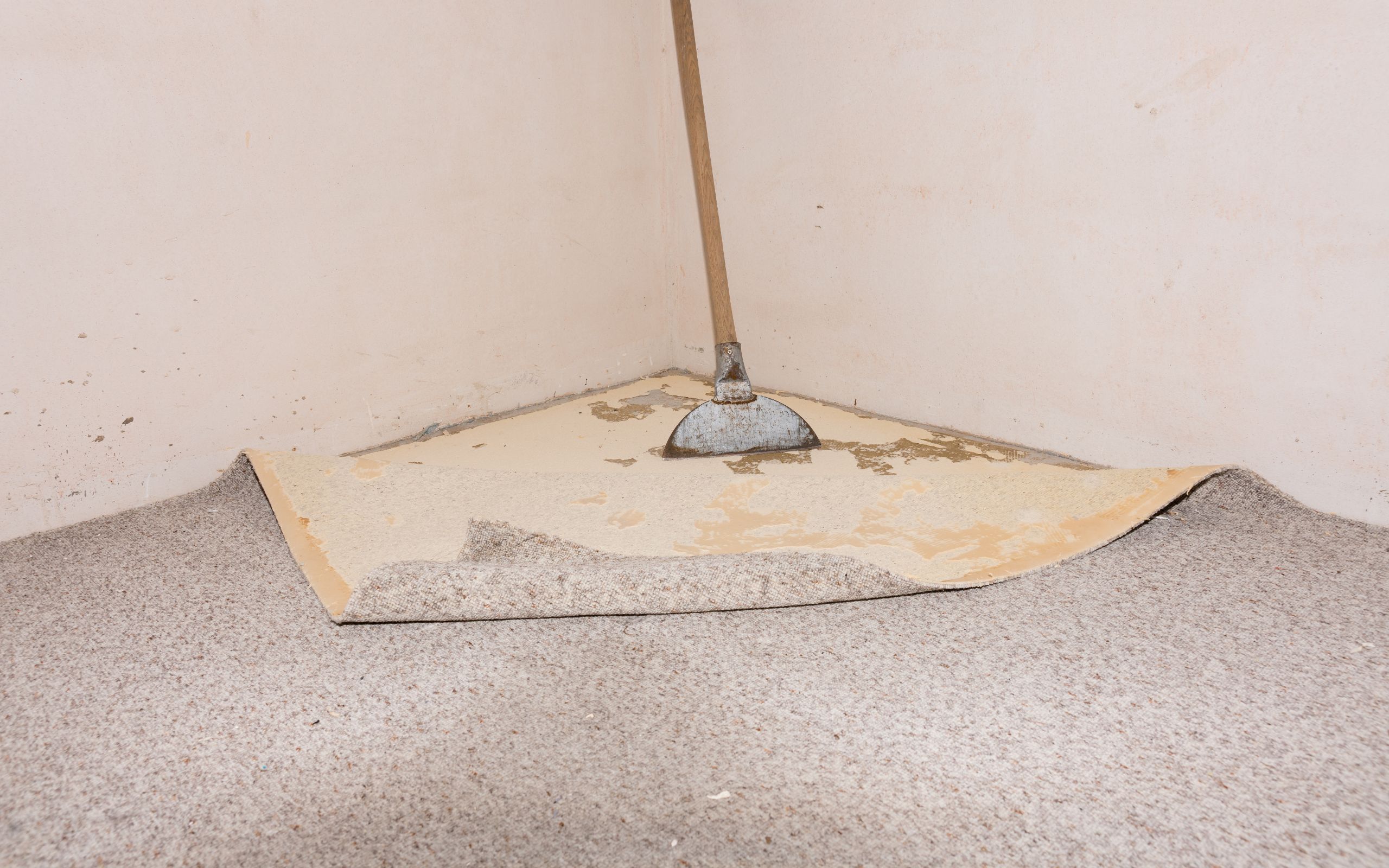Hardwood Floor Installation in Houston
1. Select Solid or Engineered Flooring
Traditionally, hardwood flooring came in thick planks of solid timber. Today, solid hardwood is still widely available, but many companies also offer engineered flooring—planks made with a thinner top layer of hardwood, bonded to other layers designed to prevent the floor from shifting during expansion and contraction cycles. “All wood moves in three directions: There’s tangential, radial, and longitudinal movement,” says Jones. “With engineered products, you’re creating opposing forces within the board to try to restrict the natural movement of the wood.”
For basements and apartments with concrete subfloors, engineered flooring offers an installation advantage. Whereas solid wood is generally installed over one or two layers of plywood, which can raise the height of a floor and interfere with existing doors or marginally reduce ceiling height, “engineered flooring can be glued directly to concrete, or over a soundproofing mat,” says Caroll. “It’s also suitable for installation over radiant heat.”
But choose carefully because some engineered floors have top layers so thin that they can’t be sanded and refinished in the future. Higher-quality products feature a thicker layer where “you’re getting as much usable wood as you would out of a solid board,” says Caroll, noting that with solid hardwood, “you can only use the part above the tongue and groove for refinishing.”
Despite the advantages of engineered flooring, some homeowners still prefer solid wood. “There’s something about a solid hardwood that’s a tangible difference,” says Miller. “You can feel it underfoot, and it’s quieter.”
2. Choose Prefinished or Site Finish
Hardwood planks can be purchased with a raw face that gets finished by a professional after installation, or prefinished, which arrives with the stain and topcoat already applied. The advantage of prefinished wood is that “you know exactly what you’re getting,” says Caroll, noting that once you select a product, you’ll have an exact sample to use in coordinating your home’s color palette and choosing other design elements, such as textiles, wall coverings, and cabinetry. Prefinished flooring also takes less time to install, because there's no need to apply color or sealant. “When you choose to do a site finish,” he adds, “you’re rolling the dice a little bit, and relying on the skills of the flooring contractor to get it right.”
Still, on-site finishing allows for a level of customization that appeals to many homeowners and designers. “That way, we have a lot more control over the stain and sheen,” says Miller. The final product will be smoother too, notes Miller, because unfinished flooring is typically sanded after it’s nailed down and then finished as a single continuous plane. “It’s a small detail,” she says, “but it does make a difference.”
3. Choose the Type of Finish
There's a whole spectrum of finishing products, says Jones, from penetrating oil to oil-like hybrids to site-finish polyurethanes to prefinished UV-cured urethane finishes. But to simplify, most finishes fall into one of two categories: oil or polyurethane.
Oil penetrates the wood and has a look and feel “that’s very soft, matte, and natural,” says Caroll. But it isn’t as impervious to stains and damage as polyurethane, which creates a hard topcoat on the surface of the wood that’s “more resilient to wear and tear, especially for people with children, or when food is flying around the kitchen.”
Oil finishes scratch more easily, but also make scratches less noticeable. “They’re also easy to touch up on a spot-by-spot basis when there’s a problem,” says Caroll. “With polyurethane, you generally need to replace a board or buff and recoat an entire section of floor.”
“Maintenance is a pay-me-now-or-pay-me-later proposition,” says Jones. “With a soft oil finish, you have easier maintenance, but you have to do it more often. The harder you go with polyurethanes, the less often you have to do maintenance, but the more involved the maintenance is to do.”
4. Consider Wood Types
In North America, oak is the king of hardwood flooring for good reason. “It’s a very durable wood that takes stain very well,” says Jones. It also has an appealing natural grain and is widely available across the region, leading to reasonable prices. In design circles, white oak is especially popular, because it doesn’t have the pinkish tones of red oak.
Walnut is another a popular choice. While slightly softer than oak, it has a deep color that makes it ideal for rooms where a darker finish is desired. “If you’re changing a color, it’s best to start with a natural material that you’re augmenting as little as possible to achieve the shade you want,” says Caroll. Walnut, he adds, is a natural choice when you desire “a richer, warmer tone.” Other readily available North American hardwoods include hickory, cherry, maple, and ash. The choice largely comes down to personal preference in terms of color and grain.
5. Pick Your Grain Pattern
Logs are cut in three different ways—plain-sawn, rift-sawn, and quarter-sawn—which yield three different grain patterns. Plain-sawn produces traditional wood grain, with undulating patterns known as cathedrals. “It’s exactly what you think of when you hear the term wood grain,” says Caroll.
Rift-sawn boards, by comparison, feature a long, linear, consistent grain, without cathedrals. Quarter-sawn boards look similar to rift, but have additional irregular figuring “with iridescent, almost 3D rays that strike out across the plank,” says Caroll. “That can be very desirable, or not, depending on what you’re looking for.”
In most cases, hardwood flooring is sold as plain-sawn, or as rift- and quarter-sawn mixed together. “The mix is nice because it gives you some of that figuring but doesn’t overdo it,” says Jones. However, it is possible to source exclusively rift-sawn wood or quarter-sawn wood, if desired.
There’s no good or bad when it comes to wood grain, says Miller. “It just depends on the application, and what you desire. In a more rustic property, we might use plain sawn; in the city, we might use quarter sawn to add a bit of life.”
6. Determine Plank Width
Although there was a time when it seemed that almost all hardwood flooring was installed in two- to three-inch strips, many people now use wider planks. “There’s a sense of luxury and expense associated with a wider plank,” says Miller. “Once you exceed the norm, it starts to feel special.” That’s why “a four- to six-inch plank is our standard specification, depending on the size of the room and the application,” she says, noting that, generally, the more expansive the room, the wider the plank they’ll choose.
While a floor composed of wide planks will have fewer seams than a floor of thin strips, it’s important to be aware that those seams may eventually become more prominent as the wood expands and contracts. Because changes in the wood aren’t distributed across as many boards, the movement may appear exaggerated.
Source: architecturaldigest
About Fantastic Floors, Inc. We are a successful company with more than 25 years of experience in the market, we have the infrastructure, high quality equipment, materials and supplies to achieve and exceed the expectations of our customers, allowing us to gain the confidence and loyalty for our services.
We have more than 500 residential, 300 properties and 25 commercial customers totally satisfied with our services.

Hardwood Floor Installation in Houston
Fantastic Floors, Best Carpet Installers in Houston, Best Floor Installers in Houston, A/C Duct Cleaning in Houston, Best Carpet Cleaning in Houston, Best Carpet Installation in Houston, Best Carpet Shampoo in Houston, Best Floor Installation in Houston, Carpet Cleaning Companies in Houston, Carpet Cleaning in Houston, Carpet Installation in Houston, Carpet Sale in Houston, Ceramic Tile Sale in Houston, Commercial Carpet in Houston, Commercial Flooring in Houston, Emergency Water Damage in Houston, Floor Installation in Houston, Flooring in Houston, Flooring Companies in Houston, Hardwood Floor Installation in Houston, Professional Carpet Installation in Houston, Professional Floor Installation in Houston





